The following text on the permaculture zones is an excerpt from the “Create a Harmonious Legacy through Permaculture” by Dwayne View, which is the workbook for Dwayne’s gardening courses. The full workbook is available for purchase through our on-site boutique.
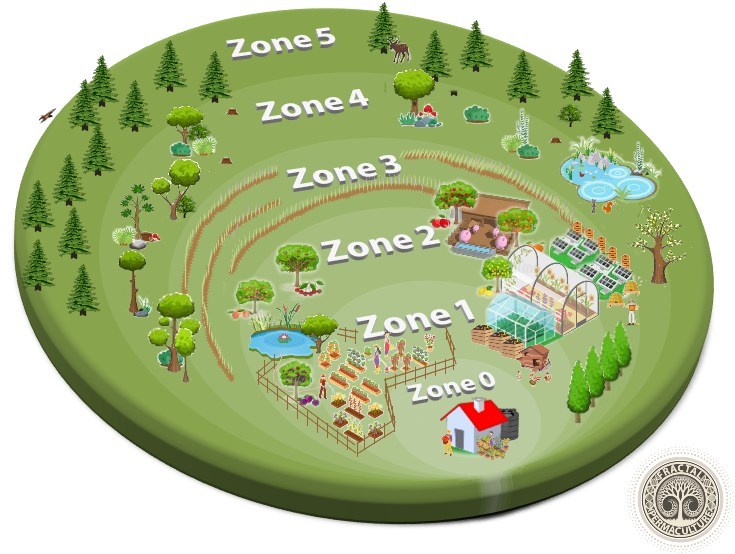
Permaculture zones and the elements that are placed into them are chosen according to the amount of attention (labor input) those elements within each zone require for success. These zones move from higher input levels to lower input (or no input) levels. As the level of input decreases, the distance of that zone increases from the living areas.
Every space and each element should serve more than one function. Please consider this example; a fruit tree can be located to provide shade to a patio space or to the west side of a building, and it can yield edible fruit. And everything in each space is supported by more than one element.
The basic layout of the zones is a series of concentric rings that ripple outward centered on the dwelling structure. However, there is opportunity to be had in thinking about the zones in a less ordered manner. Have the zones’ perimeters and shapes conform to the needs of your site.
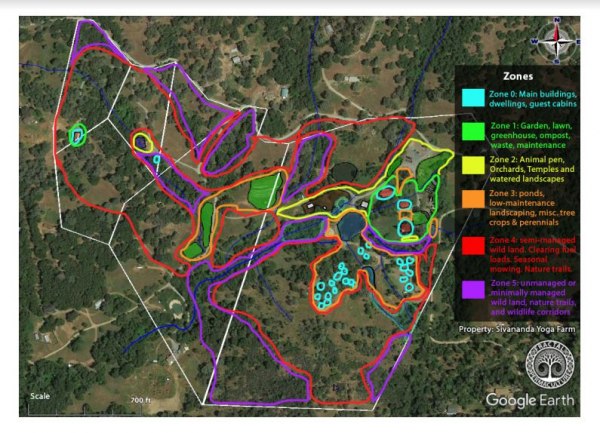
Zone 0
Zone 0 is home or a cluster of human dwelling structures. Some of the activities well suited to Zone 0 would include an appropriately sized space for culinary preparation. This space should be available to process and preserve yield from your permaculture site.
It too should accommodate sprout production and fermentation projects. All wastes that are generated in Zone 0 should have designed-in systems for their collection with a method to easily move those by-products to their appropriate outer zone for further processing.
Additional spaces in this zone should include areas for meditation, for education, and for sleep. A well thought-out bath space to accommodate the average amount of users would be important to place into this zone. Some residents will have companion animals that will require their needs to be met.
Other structural items in this zone could include attached greenhouses, shade houses, sod roofs and energy collection and storage systems.
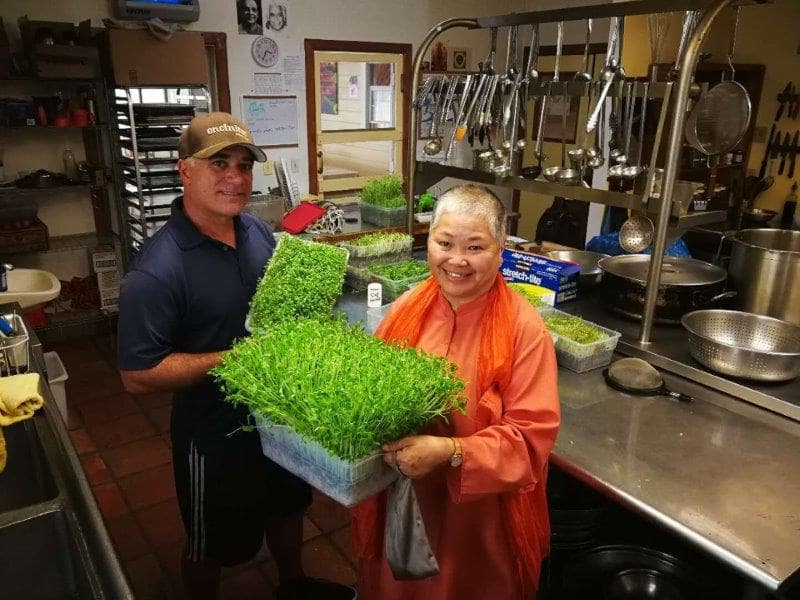
Zone 1
Zone 1 is the area surrounding the home. The two main attributes of this zone are constant attention and the requirements of daily interaction with the elements and systems within it. You should be alert to the need for implementing wild fire safety designs in this zone.
Be mindful of creating convenient and numerous access points between this zone and Zone 0, thus increasing niches for success. Some activities that could be accommodated in this zone would include meditation, exercise, education, cooking, dining, and processing yield.
Some of the permaculture systems that could be included in this zone are: potted plants, propagation tables, culinary herbs, garden beds, egg-laying boxes, compost collection, and locations for utilities. Cob, rammed-earth, adobe, metal, masonry, stone, and stucco surfaces can help to offer improved fire protection over extensive use of wood as the main design themes.
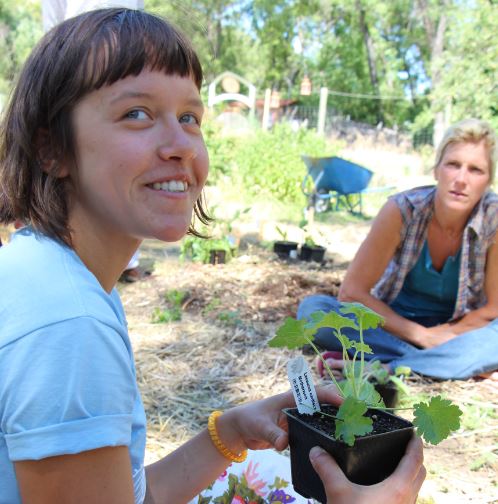
Correct grading and ,the use of permeable paving would be highly beneficial in this zone. All areas of this zone should have some form of mulching. It could be a nice gravel that is comfortable to walk upon, kept clean and would help to reduce fire danger. Then the garden beds could be dressed in compost.
Zone 2
This zone is going to need regular interaction with input to tend the needs of chosen animals and plants. You should continue to treat this zone as a “fire management area.” Make informed choices that will reduce fuel loads and crowding of flammable materials. Consider adding permanent fire-fighting systems.
Zone 2 has quite a diverse offering of elements that are well suited here: greenhouses, sheds, barns, compost bins, propagation area, and multi-purpose spaces. Your domesticated animals along with their housing and feed can be blended into barns and stables. Hardier edible annuals and perennials can be established as the permaculture’s main production beds.
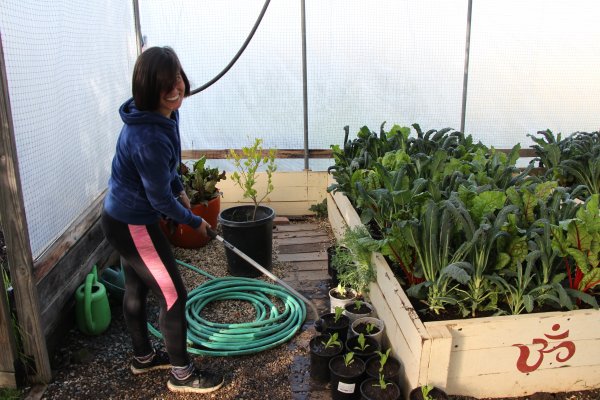
Dwarf or semi-dwarf fruit trees, including citrus if climate permits, can be established as an orchard. The orchard can be surrounded by and intermixed with fruiting vines and bushes. The integration of plants that support pollinators and beneficial insects belong in this zone, too.
Bee boxes for solitary native bees and bee hives for honey production are desirable for generating higher yields from your garden beds. Include ponds with larger margins to increase the opportunity for niches that will help to remove pollutants from your permaculture system. Slow flowing shallows with natives, rush (Juncus patens) and yerba mansa (Anemopsis californica,) are well suited to remove pollutants from aquatic systems.
Two additional elements included in this zone might be wind breaks and the first installation of guilds. Wind breaks could be well suited to your site, offering protection from harsh winter winds. Successful guilds are your biologically diverse creations that provide support within their system and yield from their production. The guilds are to be permanent, dynamic living systems.
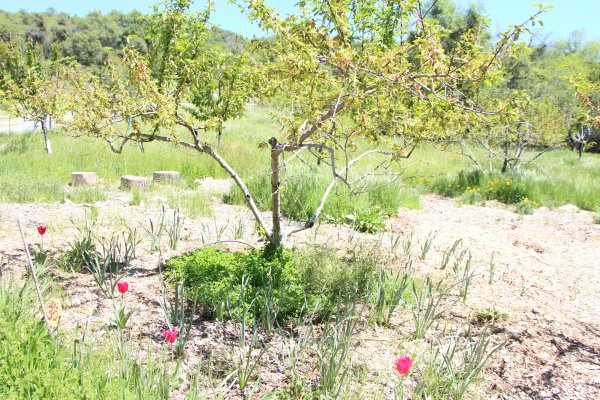
Zone 3
Known as “the farming zone.” Some of the elements that are well suited in this zone include large fruit and nut trees, orchards, berries and brambles, long-lived woody perennials, beneficial annuals to support pollinators, pasture areas for self-
grazing animals, large water storage, guilds, and wind breaks.
Again, be mindful of fire risks and design in elements to reduce the dangers. This zone will be visited less than Zone 2 and the elements here should be hardy enough to handle occasional neglect and weather extremes with resilience. This zone may not even have any piped irrigation and might subsist on precipitation alone.
So the construction of swales and ponds would make a huge difference in extending the time of available soil moisture into late spring or even summer and the extra water that is retained will continue recharging the water
table.
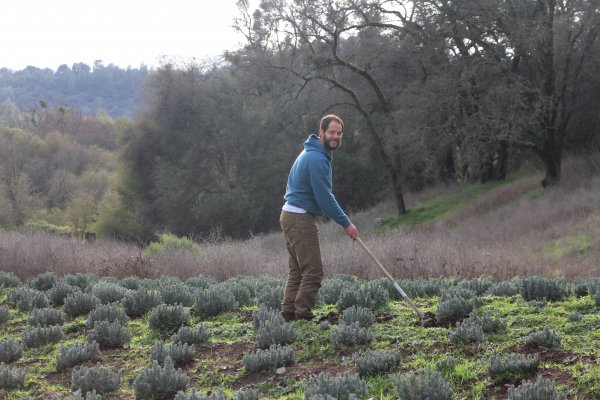
Zone 4
Zone 4 is a “wild food gathering” range. This zone may or may not be on your physical property. Be mindful to reduce fuel loads and remove fire dangers, if it is within your property boundaries. Activities and elements that belong in this zone include more water storage, native tree and plant restoration, habitat for beneficial native insects and animals, wood cutting, food gathering, limited technology that specifically supports the permaculture system, and hasty animal grazing to improve habitat.
You and other members of you community may visit this site only a few times per year.
Zone 5
Zone 5 is the outer most zone in permaculture design. Again, this zone may or may not be within your permaculture boundaries. It could even be a zone that might not get visited. Consider this area to be a “natural unmanaged area.” This space can serve as wildlife preserve and corridor.
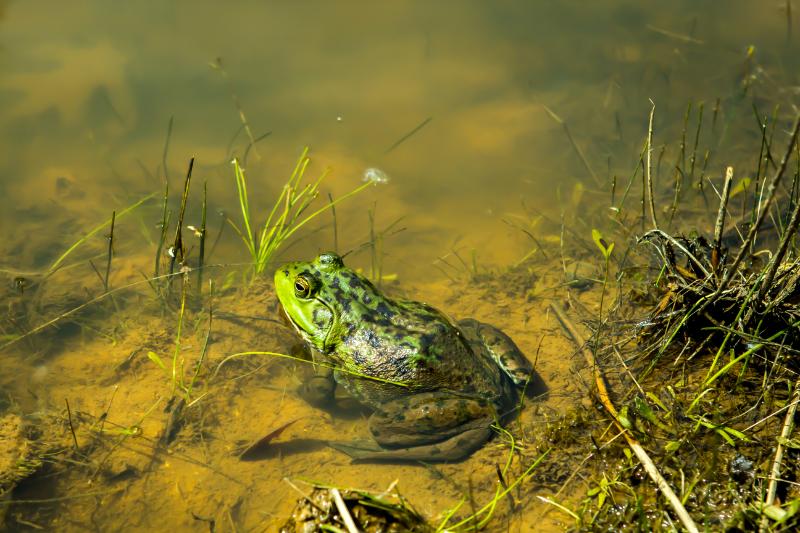
Members and animals of your permaculture community might occasionally forage inside this zone. However, it would be best to leave it untouched. This could be the zone where, over large periods of time, your community creates lasting habitat for endangered species.
Chances for wildfire in this zone are immense! Natural and man-made conflagrations will pose significant risk to the residents, the animals, and the infrastructure of your permaculture site. Your energy overlay and library research could reveal how wildfire might move across your site, giving you the ability to implement defenses.

Dwayne received his Horticulture Degree in 1996 and recently received his SmartScape and Qualified Green Gardener certification to further his plant knowledge. He currently works as the Nursery Operator in the Outdoor Garden Center at Emigh Ace Hardware in Sacramento. He has written multiple educational workbooks on topics such as gardening, permaculture, horticulture and has designed landscapes for yards, gardens, river-friendly purposes and more.


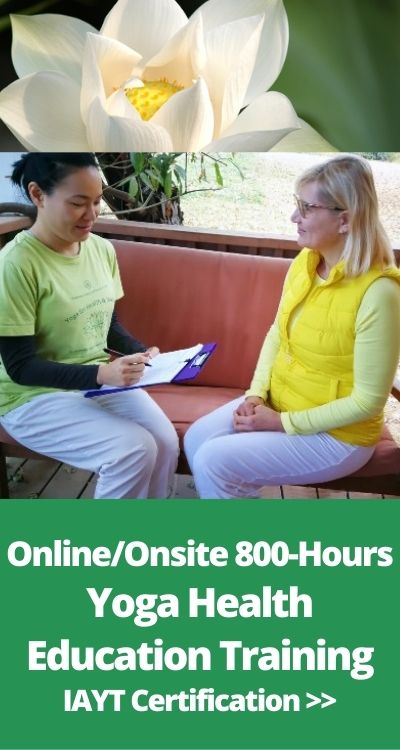
That’s a very good plan. Everyone should try and implement it.
What are you smoking, guys? To own dozens of zones one better than another I should be noble landlord… I am poor peasant struggling in daily battle with climate, insects, weeds etc., just to get a piece of bread… Enough guys really with your fantasies, I even can not undertand for whom are they!